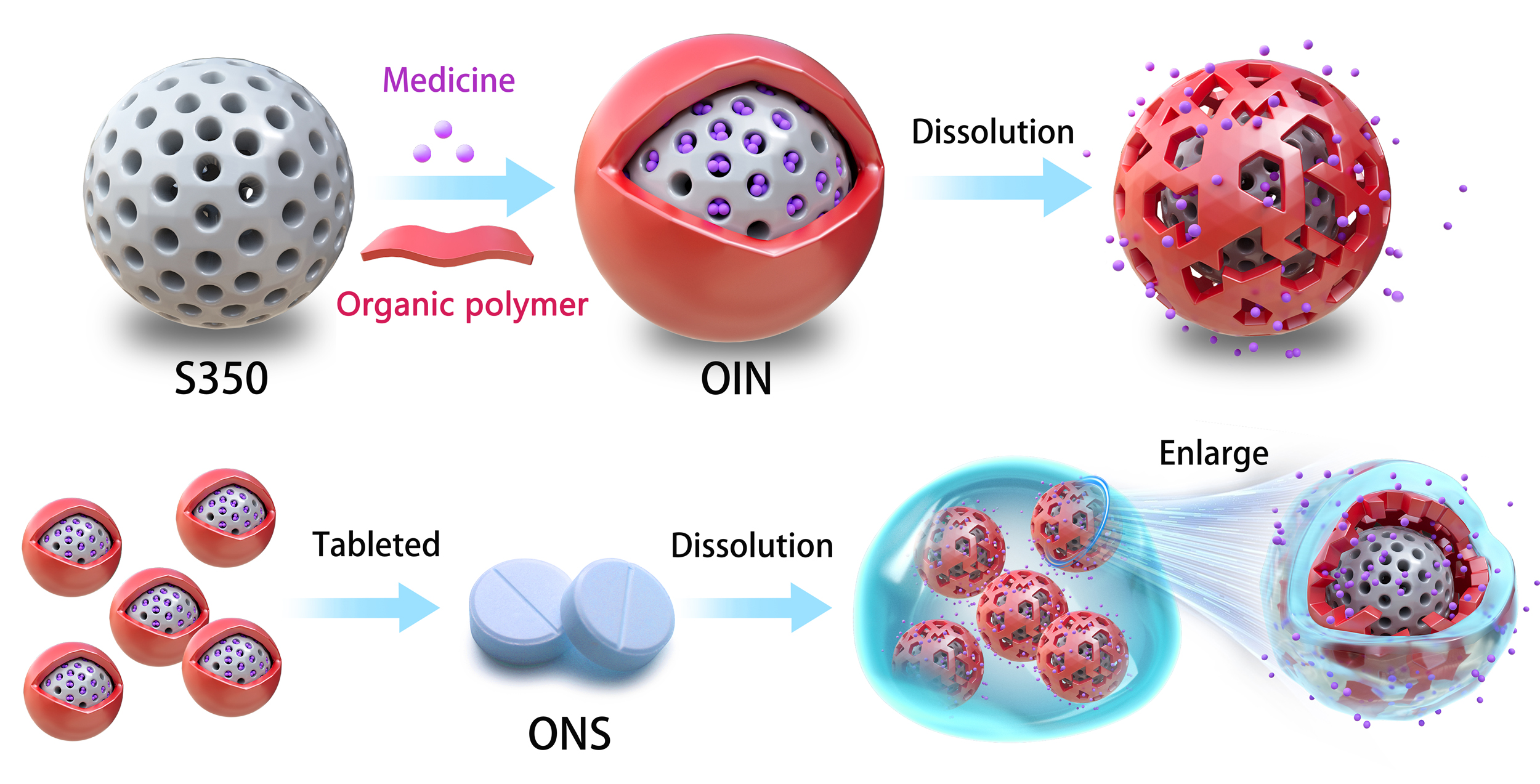
This study employed mesoporous silica as a drug carrier and combined it with an organic polymer matrix to successfully construct a novel organic-inorganic hybrid nanocomposite (OIN). The organic polymer matrix dissolves and swells in the medium to form a microporous membrane, which restricts the drug release rate, achieving satisfactory sustained-release effects both in vitro and in vivo. Subsequently, the OIN was incorporated into traditional tablet-forming techniques to develop an oral nanocomposite system (ONS). The added gel-forming sustained-release materials create a gel layer in the medium, which synergizes with the microporous membrane formed by the organic polymer matrix. This interaction regulates the drug release rate, slowing down the initial release of OIN while accelerating the later release, thereby forming a near-zero-order drug release profile, achieving zero-order drug release in vitro. Compared with Bayer’s osmotic pump formulation of nifedipine (Adalat?), the ONS exhibits significant similarity in cumulative release at multiple time points. This method not only improves the stability of drug release but also reduces production costs, holding potential clinical application value.
Yan, J. et al. / J. Chin. Pharm. Sci. 2025, 34 (7), 605–621.
